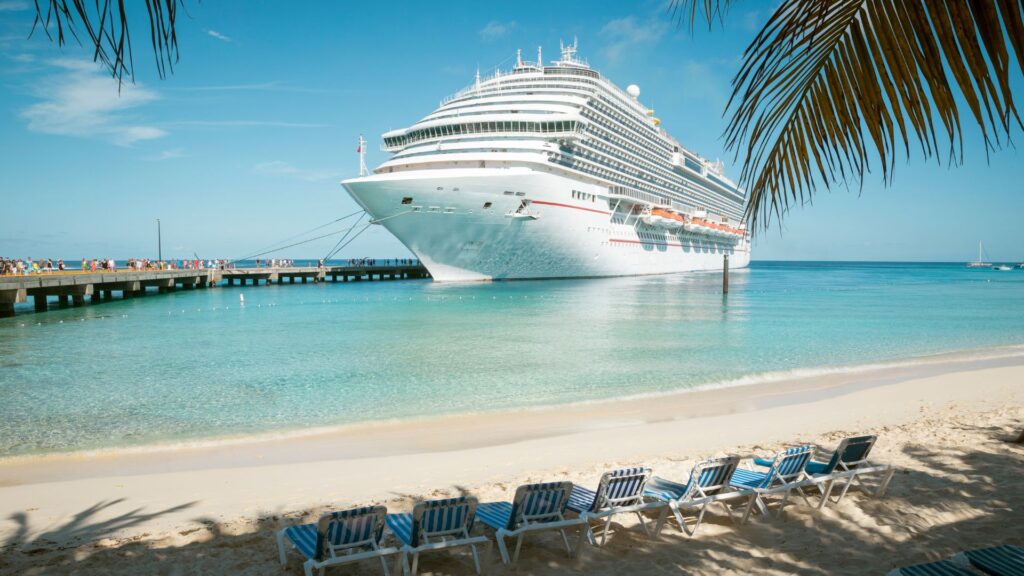The cruise industry has long been synonymous with luxury travel, breathtaking ocean views, and world-class entertainment. However, it is also increasingly scrutinized for its environmental impact. Cruise ships contribute to CO₂ emissions, air pollution, and marine ecosystem degradation, making their decarbonization a critical priority in global climate action.
At the forefront of this transformation is Green Initiative, a global leader in climate certification for the tourism industry. As cruise companies strive to reduce their carbon footprints, Green Initiative provides the expertise, tools, and verification frameworks to support their journey toward reducing their carbon footprints, integrating climate-positive solutions, and leading the industry toward a net-zero future.
In this article, we explore how Green Initiative is shaping the future of sustainable cruising by helping companies measure, reduce, and offset their emissions while setting new standards for climate-positive tourism.
Why Cruise Ships Must Act on Climate
With the growth of the cruise industry, environmental concerns have become more urgent. According to International Maritime Organization (IMO) studies, the shipping sector—including cruise ships—accounts for nearly 3% of global CO₂ emissions. While efforts have been made to improve efficiency, the industry remains heavily reliant on fossil fuels, producing greenhouse gases, sulfur oxides (SOₓ), and nitrogen oxides (NOₓ) that contribute to climate change and air pollution.
Some of the biggest environmental challenges in the cruise sector include:
- High fuel consumption: Large cruise ships burn thousands of tons of fuel per voyage, releasing significant amounts of CO₂.
- Methane slip from LNG fuel: While liquefied natural gas (LNG) is marketed as a “cleaner” alternative, its methane slip effect can negate its climate benefits.
- Pollution in sensitive marine environments: Cruise routes often pass through fragile ecosystems like the Arctic and coral reefs, where emissions, waste, and noise pollution endanger marine life and accelerate habitat degradation, threatening biodiversity.
- Port emissions and energy use: When docked, cruise ships rely on onboard generators, producing harmful emissions in coastal cities.
Despite these challenges, the cruise industry has a unique opportunity to lead in climate action. The adoption of low-carbon fuels, energy-efficient technologies, and sustainability certifications is rapidly gaining traction.
Regulatory and Market Forces Driving Change
To accelerate its sustainability efforts, the cruise industry must comply with global, regional, and corporate sustainability regulations.
Key Regulations Impacting Cruise Decarbonization:
- IMO 2050 Climate Strategy: The International Maritime Organization (IMO) aims to cut shipping emissions by at least 50% by 2050 compared to 2008 levels.
- EU Emissions Trading System (ETS): Starting in 2024, the European Union will include shipping emissions in its carbon market, financially penalizing excessive CO₂ emissions.
- MARPOL Annex VI: This regulation imposes strict limits on sulfur and nitrogen oxides in ship emissions to protect air quality.
- Energy Efficiency Indexes: The Energy Efficiency Design Index (EEDI) and Carbon Intensity Indicator (CII) mandate efficiency improvements for existing and new ships.
Beyond regulations, market forces and consumer expectations are also shaping the industry’s sustainability journey. Travelers are becoming more eco-conscious, demanding greener options, while investors increasingly favor companies with strong ESG (Environmental, Social, and Governance) commitments.
The Role of Green Initiative in Cruise Industry Decarbonization
While regulations set the minimum compliance standards, Green Initiative goes beyond by offering a comprehensive climate certification that helps cruise operators measure, reduce, and offset their emissions, enabling a structured transition toward carbon neutrality.
1. Green Initiative’s Climate Certification for Cruise Operators
Green Initiative offers three science based climate certification options for cruise lines, providing a structured framework for sustainability and emissions management:
- Carbon Measured Certification: Assesses a company’s carbon footprint, identifying key areas for emission reduction.
- Carbon Neutral Certification: Ensures emissions are measured, reduced, and offset through verified carbon credit projects to achieve neutrality.
- Climate Positive Certification: Goes beyond neutrality by actively removing more carbon than emitted, supporting ecosystem regeneration and climate restoration.
Each certification follows a structured three-step process to guide cruise operators toward sustainability:
- Calculate – Assess the company’s carbon footprint using advanced emissions accounting methodologies.
- Mitigate – Implement emission reduction strategies through efficiency improvements, alternative fuels, and operational changes.
- Certify – Offset unavoidable emissions by investing in high-quality carbon credit projects, supporting forest conservation, biodiversity, and climate initiatives.
By obtaining any of Green Initiative’s certifications, cruise lines demonstrate transparency, accountability, and leadership in climate action. This reinforces their position in an increasingly sustainability-driven market while contributing to a resilient and environmentally responsible future for the cruise industry.
2. Supporting Cruise Lines in Their Climate Journey
While many cruise operators are exploring long-term net-zero strategies, Green Initiative focuses on delivering achievable and impactful carbon neutrality solutions today. This includes:
- Assisting cruise operators in identifying the most effective decarbonization pathways based on industry best practices and emerging technologies.
- Offering guidance on integrating carbon reduction strategies into core business models, making sustainability a long-term competitive advantage.
- Ensuring compliance with global climate frameworks, such as the Paris Agreement, IMO regulations, and corporate sustainability commitments.
By bridging the gap between current technological capabilities and long-term decarbonization goals, Green Initiative ensures that sustainability actions are tangible, measurable, and aligned with global climate objectives.
3. Collaborations with Ports and Destinations for Sustainable Cruise Tourism
Cruise emissions extend beyond the ships themselves, affecting port cities, coastal communities, and marine ecosystems. To address this, Green Initiative is exploring potential collaborations to:
- Partner with ports to assess and develop shore power solutions, allowing cruise ships to connect to the grid and minimize emissions while docked.
- Work with tourism boards to promote low-carbon excursions and responsible tourism experiences.
- Engage local communities to ensure that the economic benefits of cruise tourism are equitably distributed while prioritizing environmental conservation.
Through these prospective collaborations, Green Initiative aims to transform cruise destinations into climate-smart regions, ensuring that sustainability efforts extend beyond the vessels themselves and into the ecosystems and communities they impact.
The Way for a Sustainable Cruise Industry
Green Initiative’s Carbon Neutral Certification provides the cruise industry with a structured and practical pathway to sustainability, ensuring compliance with global climate goals while maintaining economic viability. By leveraging certification, operational guidance, and multi-stakeholder partnerships, Green Initiative fosters holistic climate action that extends beyond ships to ports, tourism boards, and local communities. Looking ahead, advancing toward Climate Positive Certification offers cruise operators the opportunity to go beyond carbon neutrality, actively contributing to climate restoration and ecosystem regeneration.
By prioritizing carbon reduction today and climate-positive initiatives for the future, Green Initiative helps steer the cruise industry toward a more responsible, resilient, and sustainable future.

This article was written by Ella Baehringer from the Green Initiative team






